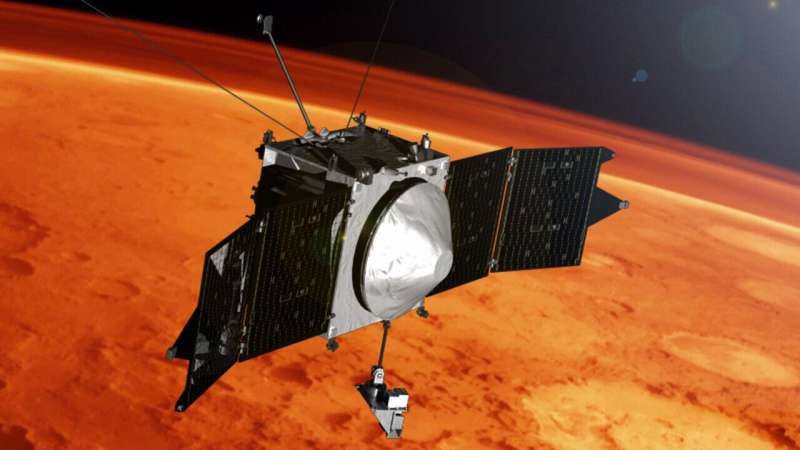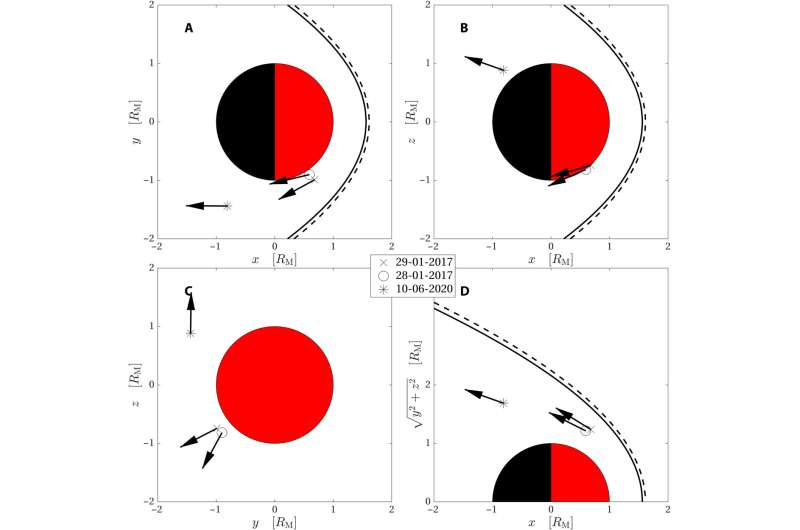This article has been reviewed according to Science X's editorial process and policies. Editors have highlighted the following attributes while ensuring the content's credibility:
fact-checked
peer-reviewed publication
trusted source
proofread
Researchers discover jet streams in Mars' magnetosheath

A research team from Umeå University and the Swedish Institute of Space Physics in Kiruna has discovered jet streams in the magnetosheath of Mars using data collected by NASA's MAVEN spacecraft. This is the first time such a jet has been found in the magnetosheath of a planet other than Earth. The results are published in the journal Science Advances.
A magnetosheath jet is a clump of flowing plasma in the magnetosheath. It is distinguished by being faster or denser than its surroundings, sometimes both faster and denser. The magnetosheath is the part of space where the solar wind is forced to flow around a planet.
"Jet streams in magnetosheaths have been seen near Earth for 25 years and we were really curious if they could be found elsewhere," says Herbert Gunell, Associate Professor at Umeå University, who led the study.
NASA's MAVEN spacecraft has been in orbit around Mars since 2014 to study the Martian atmosphere and its interaction with the solar wind.

"Before MAVEN, only around Earth did we have satellites with instruments fast enough to detect jets. But it was not obvious that we would find them on Mars, as there are important differences between the two planets. For example, Mars is smaller than Earth and lacks a global magnetic field, so the magnetosheath on Mars is much smaller than on Earth. Despite these differences, we now know that Mars also has magnetosheath jets," says Herbert Gunell.
"We have already seen that magnetosheath jets generate waves and that they can move through the entire magnetosheath and into the region of stronger magnetic fields further down. We have just discovered that they exist on Mars, and it will be exciting to find out more about them and the role they play in the interaction between Mars and the solar wind."
More information: Herbert Gunell et al, Magnetosheath jets at Mars, Science Advances (2023). DOI: 10.1126/sciadv.adg5703
Journal information: Science Advances
Provided by Umea University




















